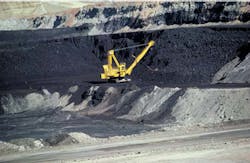While the United States is taking advantage of its shale gas production boom, countries across the Atlantic have responded with a sharp increase in burning of coal to fuel local utilities, despite EU regulations intended to reduce the proportion of fossil fuels in the overall energy mix because of pollution, CNN reports.
Apparently, European industries have been seriously disrupted by the U.S. shale gas boost. The large amounts of shale have pushed natural gas prices to their lowest level in a decade, causing a general switch from coal to gas in the United States. Thus, some U.S. coal production could only be used overseas and European markets have been ready to embrace it in various power stations. However, many experts believe that the surge in coal use is unlikely to persist.
According to the International Energy Agency, coal demand in European countries is near its peak and by 2017 will have dropped to levels similar to those in 2011. Even coal industry representatives share the opinion that coal cannot sustain high levels of demand. The temporary increase is entirely driven by economic circumstances and should not be regarded as any kind of coal renaissance, says Milton Catelin, head of the World Coal Association.
RELATED: North America leads shift in global energy balance, says IEA
Despite efforts from campaigners to lobby for renewal and upgrade of old facilities, environmental groups are determined to eradicate coal-based energy altogether. Matthias Hartung, chief executive of RWE Generation, which consists of RWE's German, Dutch and UK power plants, says that modern plants are just not economically viable at the moment.
The European Climate Foundation has claimed that less than five years ago there were plans for 112 new power plants across Europe, but work has started on just two and plans for 73 others have been dropped entirely. In the long term, use of coal is unlikely to remain at its current levels because that runs counter to EU environmental policy, which aims for a 20 percent reduction in carbon emissions by 2020 compared to levels in 1990, industry experts commented.
Currently, however, coal is going strong in Europe. Exports from the United States rose by 29 percent last year and prices fell from $130 a ton in March 2011 to around $86 at present, CNN notes.
